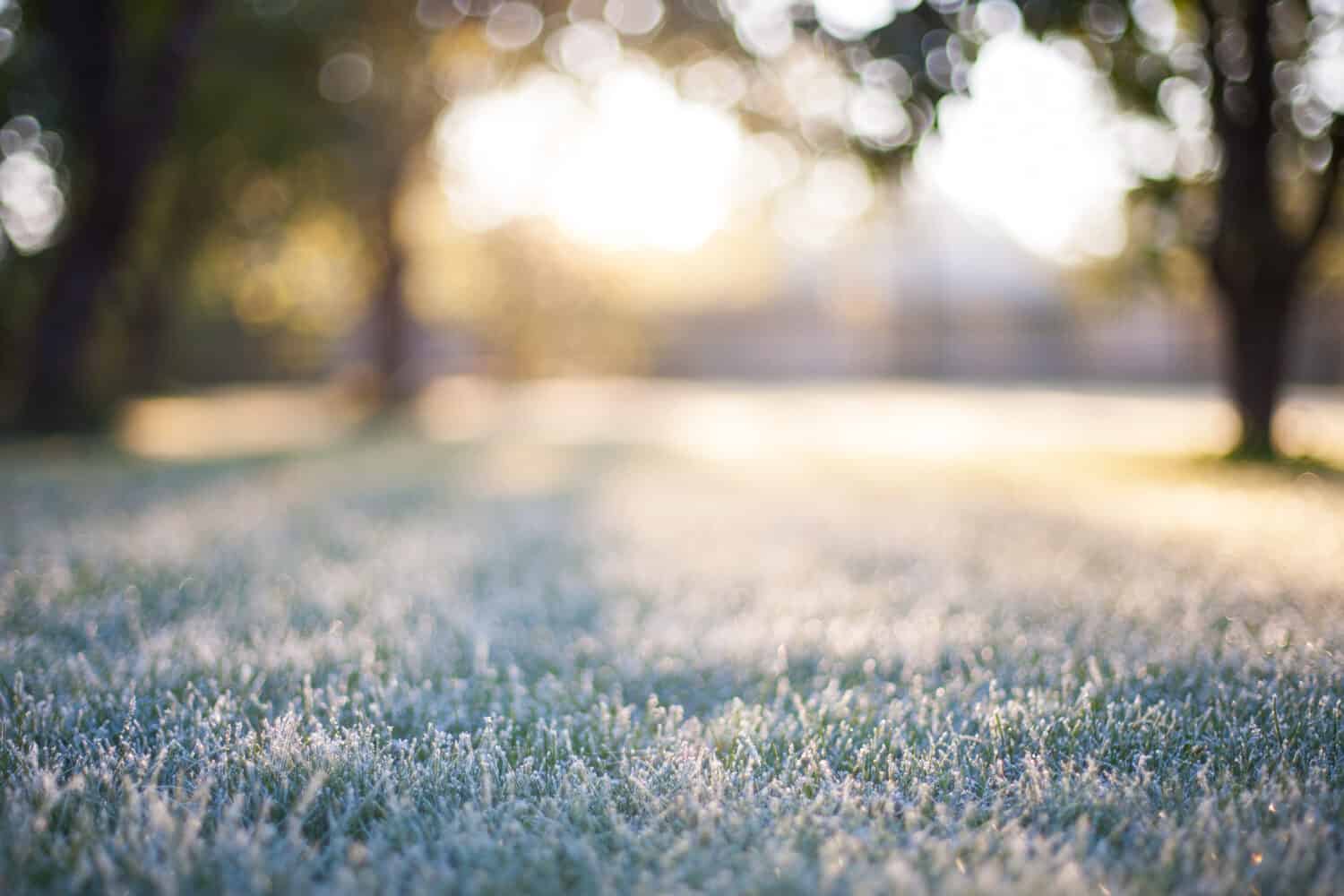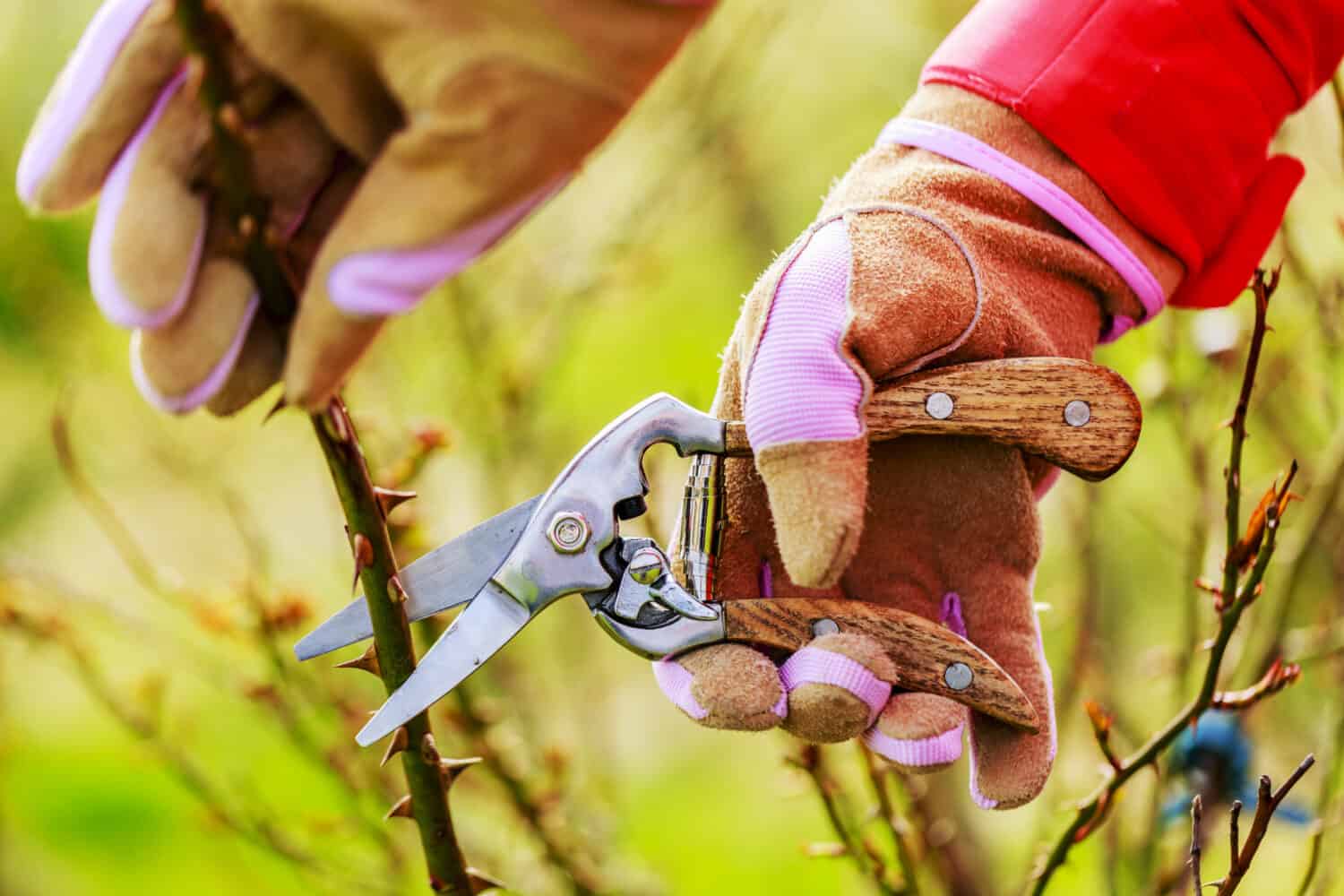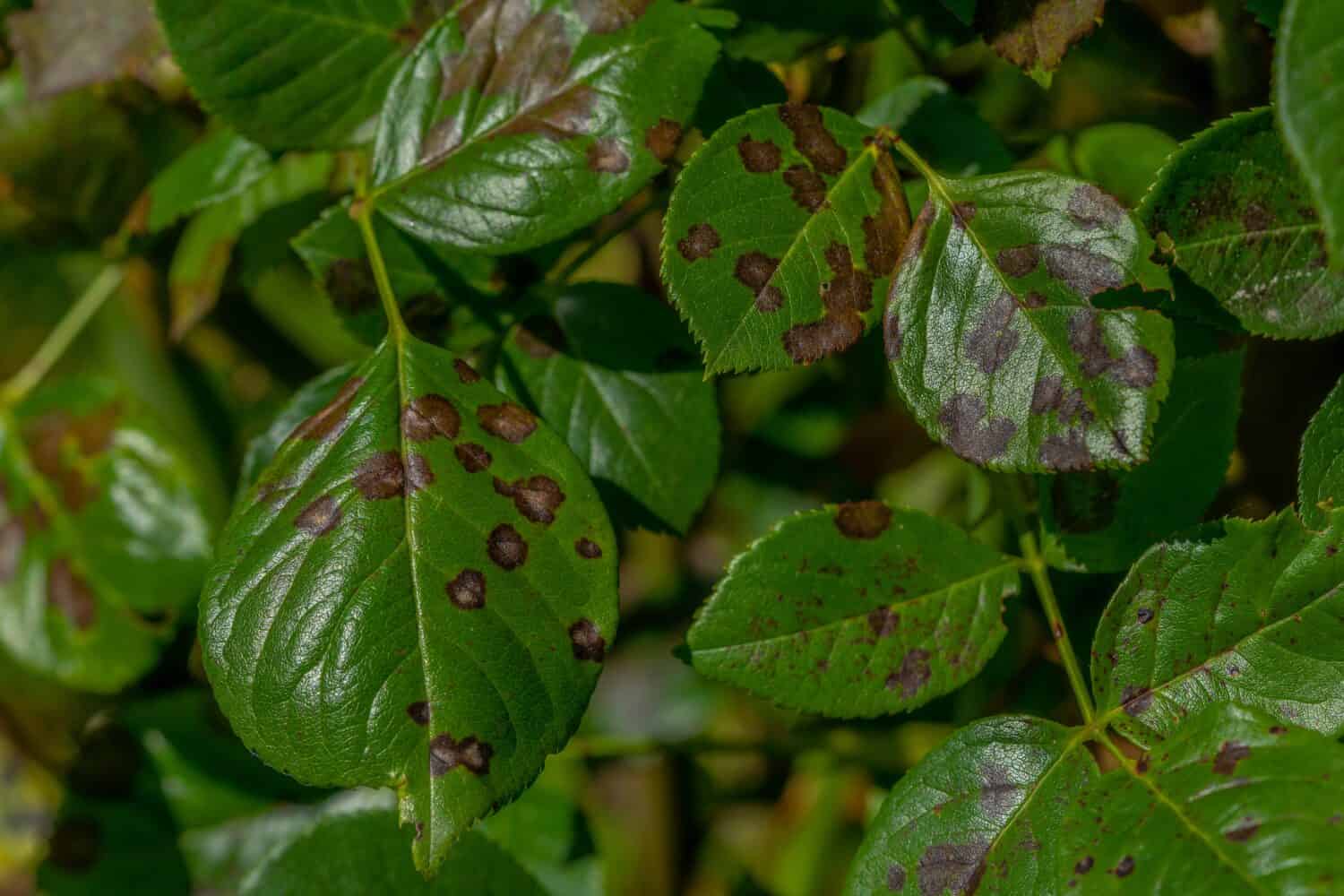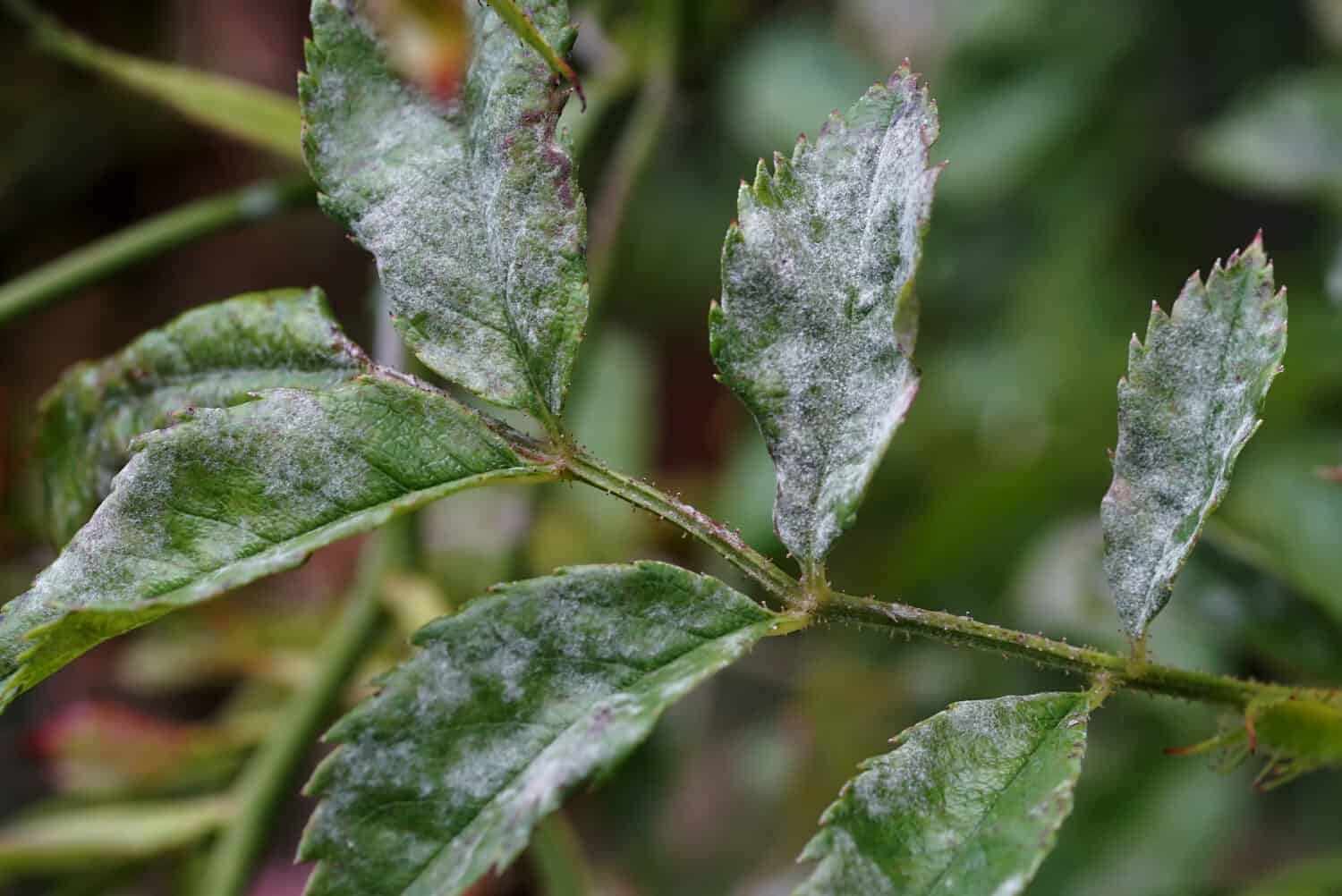Roses are a timeless classic. These beautiful, delicate plants have captured the hearts of gardeners for ages, and they’re a wonderful addition to just about any garden. Many new gardeners are intimidated by growing roses, however, and often miss out on the satisfaction that caring for roses can bring them.
These flowers, while they do require some special care and maintenance, aren’t as difficult to grow as many might think. With a bit of forethought and attention to detail, just about anyone can grow and maintain a healthy rose garden.
In this article, we’ll talk about some considerations you will want to make when planning your rose garden. We’ll also talk about how to care for your roses once you’ve got your plan together.
Things to Consider First
Before you jump in, there are a few things you should consider that can make or break your garden’s success. Caring for roses once they’re in the garden is only half the battle — planning can be crucial to your success going forward.
Choosing a Cultivar
Deciding which cultivars you’re going to plant is a crucial first step in planning a rose garden. You should know what you’re looking for in a rose. Do you want large, densely petaled blooms to put on display or are you looking mostly for a decorative and effective hedge? Will you be okay with finicky roses that require regular cleaning, pruning, and overall higher input, or would you prefer a low-maintenance cultivar?
You should also have an idea of what kind of growth habit you’re looking for. There are small cultivars that never grow much taller than three feet. On the flip side, some sprawlers and climbers can ascend multiple stories and spread just as wide, if they’re allowed. How much space do you have in your yard? Do you have enough time in your schedule to maintain faster-growing cultivars? Will the cultivar meet your aesthetic goals?
One of the most important things to consider when choosing a cultivar is your growing environment. Roses tend to thrive in USDA zones 5-8, but climates vary even within these growing zones. In states like Georgia and Alabama, the hot summers can wilt roses fast, and the high humidity can encourage fungal problems. A similar growing zone in Texas, however, may have much drier air overall and roses there may struggle with spider mites more often than fungal issues. There are rose cultivars that can handle some growing conditions better than others, so take your local climate into account when choosing one.

Choosing a cultivar that is well-suited for your local climate is crucial to your success in rose gardening.
©Fabrizio Guarisco/Shutterstock.com
Acquiring Your Plants
In general, gardeners acquire their roses online, from other rose gardeners, or at local gardening centers and specialty stores. When buying online, there is always the risk of poor quality plants, mishandling in the mail, and shipping delays. Reputable online retailers will select healthy plants before shipping them to you, however, and will usually handle any shipping-related mishaps. Although there are inherent risks associated with shipping live plants, shopping online does afford the gardener a very wide selection of cultivars.
Shopping locally for your roses has advantages and drawbacks as well. While the selection is usually more limited, local garden centers will primarily stock roses that are hardy in your growing zone. These cultivars will often perform well in the area and the people who work there may have experience with them. You will also be able to inspect your plants yourself before taking them home. Garden centers can also be great places to network with local gardeners and get planting advice.
The cultivar you have chosen may decide for you how you need to acquire your plants. Some cultivars may only be available as bare-root plants while others may come in containers. If you can’t find your desired cultivar locally, then you or your garden center may need to order it online.
Timing
Timing the purchase or arrival of your roses is also critical. Usually, you can plant roses in either early spring or fall. Planting at these times of the year gives your new rose bushes plenty of time to establish healthy root systems before the growing season is in full swing.
When you plant during these seasons will depend on your local climate. You should consider the average dates of your area’s first and last frost of the year and avoid them. You should also know when temperatures begin to heat up in the spring and summer if they do at all. If you’re planting in the spring, be sure to give your roses at least a month (preferably six weeks) to establish before hot weather sets in. When planting in the fall, avoid the first frost date by at least six weeks, and be sure that your roses can withstand your winters unaided. If not, you’ll need to winterize them.
You can usually find out this information from someone at your local garden center. If you don’t have a good source of local information, you may be able to speak with other gardeners in your area on online forums.

If you’re new to gardening, find out from local gardeners when the best times to plant are. Be careful to avoid frost.
©Evoque Arte/Shutterstock.com
How to Care for Your Roses
Now that we’ve gone through some of the things you’ll want to consider before purchasing your roses, we can talk about what it means to care for them. Different cultivars may require slightly different care or tolerate a wider range of conditions. However, most roses prefer more or less the same things.
Water
Roses are, in general, pretty thirsty plants. When you first plant your roses in the garden, you’ll want to water them deeply every couple of days to help them establish. For most cultivars, the establishment period lasts from 4 to 6 weeks. Once this period has ended, you can usually cut back on how frequently you water.
There is no hard and fast rule for how often you should water your roses, however. While you will likely need to water once or twice a week, your own experience and observations, as well as advice from local gardeners, will be your best resource. Depending on your cultivar, local climate, and average rainfall, you may need to water your plants as rarely as once a week or as often as a few times per week.
The key is to keep your roses’ soil evenly moist throughout the growing season without drowning them. You’ll want to water the soil slowly and deeply, to a depth of about a foot. Watering deeply encourages your roses to send roots downward, where the soil stays moist for longer. Late morning hours are the best time to water, as it gives your plants plenty of time to drink up before the sun intensifies.
To find out if you’ve given your plants enough water, turn off the hose and wait about 30 minutes. Then, carefully dig down or probe about 12 inches into the soil. If the soil at that depth isn’t moist, then you know you need to change how you’re watering. You may need to water more. If water is running off the surface of your bed, you may need to water more slowly. When caring for roses, practice is key. With experimentation, you’ll figure out what you need to do in your garden bed.
Sunlight
While some cultivars can tolerate more shade than others, roses love sunlight across the board. You’ll want to make sure your roses receive at least 6 and preferably 8 or more hours of sunlight over the day. Lots of sunlight also helps keep your roses dry and helps prevent fungal infections.
While roses need a lot of suns, you’ll usually want to provide them some shade during the afternoon hours. Exposure to the sun during the hottest parts of the day can scorch leaves and dry out blooms. Some cultivars can handle more intense sunlight than others, however. Earth-Kind cultivars such as ‘The Fairy’ and ‘Marie Daly’ are especially good at handling the heat. Their blooms will even blush when temperatures rise high.
Soil Conditions
In general, roses prefer acidic, well-draining soils that are rich in organic matter. These soils facilitate nutrient uptake and allow deep penetration of irrigation water. They also do a great job of preventing the formation of standing water. This is great, as roses are pretty susceptible to fungal infections and root rot.
If you live in an area with soil that is naturally alkaline, you may wish to amend your soil to lower the pH. The best and safest way to do this, at least initially, is by incorporating well-composted organic matter into the soil when you plant your roses. In heavy clay soils, this will also serve to improve drainage and aeration by increasing the overall pore size of the soil structure. The addition of composted organic matter into sandy or rocky soils has the opposite effect — it increases the length of time your soil can hold onto moisture. Top-dressing your soil with compost a couple of times per season will help maintain a lower pH. It’ll also give your plants, and the soil, a nutritional boost as it breaks down.
Sometimes, though, it’s best to work with what you’ve got. Some Earth-Kind rose cultivars are especially good at growing in heavy, alkaline soils. These cultivars have proven that they can handle a variety of soil types. If you’re just starting out growing roses, an Earth-Kind rose cultivar is a great choice.
Mulching
No matter where you live, you should apply a healthy layer of organic mulch to your rose bed. A 3- or 4-inch layer is best. It shelters the soil and provides you and your roses with a host of benefits.
Firstly, mulch reduces the rate at which your soil loses moisture. The longer your soil holds water, the less time and resources you have to spend watering. This can be a lifesaver in drought conditions.
Mulching also helps moderate soil temperature. In areas with especially harsh winters, intense summers, or both, this quality is very valuable. Soil that becomes too warm can contribute to heat stress in plants. This affects their ability to uptake water and nutrients from the soil and distribute them throughout their tissues. Their growth rate will slow down and their leaves may turn yellow or brown, or even fall off. In the winter, mulch helps keep the underlying soil warm and moist. A good layer of mulch can make a major difference in the ability of your roses to survive a colder-than-average winter.
Pruning
Roses benefit greatly from yearly pruning. Removing dead, unproductive, or diseased parts of the plant keeps them growing happily and healthily. It is also important for maintaining their shape and size. As important as it is to general rose care, pruning roses isn’t as complicated as you might think. It’s very difficult to prune too much.
Pruning practices sometimes differ depending on where you live. In places where winter winds are strong and snow tends to accumulate, gardeners will prune twice per year: once in the fall and once in the spring.
In the fall, once your roses have gone dormant, you’ll want to remove any damaged or diseased canes. Anything that is broken, abraded, dead, dry, etc. should be pruned away. If a cane shows signs of disease, cut it back until the stem appears healthy and the inside is light in color. At this point, many gardeners will reduce the overall height of the plant to about 30 inches, trimming back all of the remaining canes. Climbing roses are treated differently and allowed to remain longer. This allows some length to account for winter damage and dieback in cold climates.
In the spring, you should prune after the danger of frost has passed. Pruning stimulates new, tender growth that likely will not survive the frost. Remove any canes that have died or become damaged over the winter. At this point, you’ll want to focus on shaping your bush, ensuring that there is plenty of space in the center of the plant for airflow. Depending on the growth habit of your cultivar, you may need to prune more or less material away to achieve the effect you’re after.
When making your pruning cuts, do so at an angle. This prevents moisture from accumulating on the cut site and therefore reduces the chances of fungal or bacterial infection.

When pruning your roses, be sure to make your cuts with sharp, clean tools and wear protective gloves and clothing.
©gorillaimages/Shutterstock.com
Caring for Roses — Common Pests and Diseases
When caring for roses, it’s unfortunately pretty likely that you’ll encounter insect pests or diseases at some point. Roses are notoriously susceptible to fungal infections, and insects target them fairly frequently. If you pay good attention to your roses, however, you’ll be able to quickly identify and deal with problems that arise.
Insect Pests
Aphids are very common rose pests and occur just about everywhere. Aphids will feed on the new leaves and shoots that appear on the plant. In small numbers, they are not usually a concern. However, large numbers of aphids can begin to distort or kill new buds. Their waste, called honeydew, will also encourage the growth of mold when present in large quantities. The easiest way to deal with aphids, in most cases, is simply to spray them off the plant with water. A spray bottle works well for this. Be sure that your plant has plenty of daylight left to facilitate drying, however, as wet foliage encourages fungal infection.

Unfortunately, aphids love roses almost as much as we do. They are not usually a problem in small numbers. When populations rise, however, they can encourage secondary infection.
©Floki/Shutterstock.com
Fungal Diseases
Caring for roses properly is one of the best preventions of fungal diseases. Though they are susceptible to fungal infections like blackspot, sooty mold, and powdery mildew, you can help prevent them.
Blackspot
Blackspot looks like it sounds. Your rose bush will show dark, black spots on the surfaces of its leaves. It is most prevalent when the weather is cool and damp, requiring standing moisture on leaf surfaces to take hold. You can help prevent blackspot from forming by watering your roses at the base of the plant. If you must wet your plant’s foliage, be sure to do so during the daytime when it will have time to dry out before nightfall.

Rose leaves suffering from a black spot. Spores of this fungus may germinate and infect leaves that remain in contact with standing water for 7 hours or longer. If you must wet your plant, ensure that it has time to dry.
©foto_molka/Shutterstock.com
Powdery Mildew
Powdery mildew commonly affects young growth, covering them with a white, powdery substance. Young leaves and shoots may become discolored, curled, or distorted, and flower buds may not open. Like blackspot, powdery mildew thrives in humid conditions. However, it does not require standing water to infect your plants. The best way to prevent this fungus from taking hold is to ensure that your plants have plenty of airflow. Thoughtful pruning and adequate spacing of plants go a long way toward preventing powdery mildew. Space plants so that there will be at least a foot of space between them when they mature.

Powdery mildew coating the surface of a rose leaf. As the infection advances, leaves will begin to curl and distort.
©aRTI01/Shutterstock.com
The photo featured at the top of this post is © megaflopp/Shutterstock.com
Thank you for reading! Have some feedback for us? Contact the AZ Animals editorial team.






